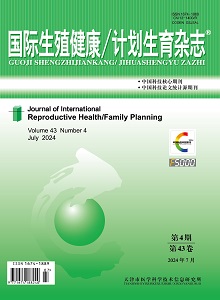Objective: To explore the key genes related to patients with recurrent implantation failure (RIF) using bioinformatics analysis, to identify cell subpopulations and cell-cell communications in human endometrium, and to discuss the impact on endometrial receptivity. Methods: The GSE103465 dataset, GSE183837 dataset and GSE223672 dataset were downloaded from the Gene Expression Omnibus (GEO) database as research samples. Endometrial tissue data from RIF patients and control females were utilized. R language and Perl scripts were employed to conduct the quality analysis on the raw data, and the limma package was utilized for differential gene selection. The selected differentially expressed genes were subjected to gene ontology (GO) and Kyoto encyclopedia of genes and genome (KEGG) analysis, Protein-Protein Interaction Networks (PPI) construction and core gene selection. Using R language-related packages, single-cell annotation and classification were performed, followed by the construction of an intercellular communication map. Results: The identified key genes included RPF2, DDX27, PWP2, CDC5L, NOP2, DCAF13, CEBPZ, FTSJ1, GNL3L, and NSUN2. The main cell types in the endometrium of patients with RIF were identified as epithelial cells, NK cells, granulocyte-monocyte progenitors, endothelial cells, and smooth muscle cells. The enriched pathways involving GRN, SPP1, PTN, MIF, MK signaling pathways participate in the intercellular communication through receptor-ligand pairs. Conclusions: The impaired endometrial receptivity in RIF patients is associated with aberrant RNA modification and processing and epigenetic modification errors, as well as inflammatory response and decreased metabolism. Intercellular communication reveals that endometrial epithelial cells in RIF patients have a decreased capacity for osteoblastin-integrin-mediated adhesion and invasion, which may be the cause of embryo implantation failure.

